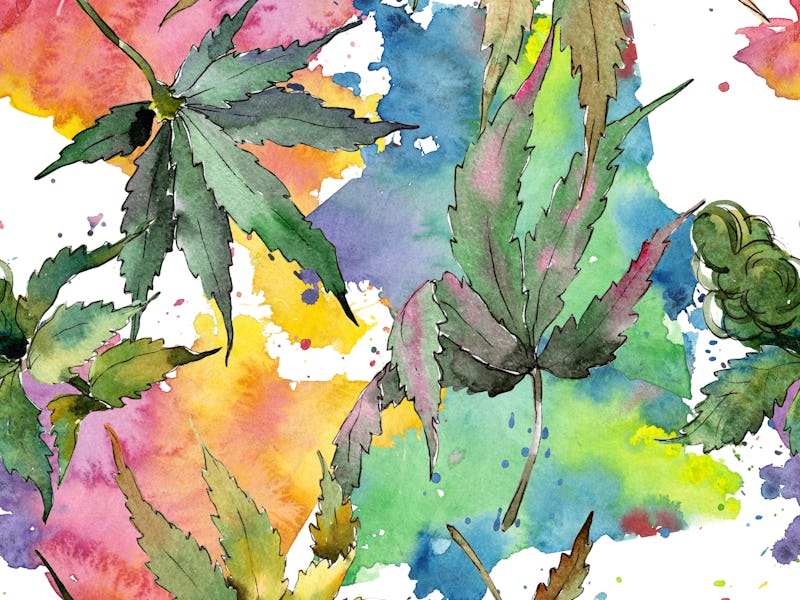Geneticists reveal the evolutionary origins of Cannabis sativa
It’s not easy being green.

Whether smoked, eaten, or merely smelled wafting in through an open window, cannabis enjoys a special kind of fame — it is used all over the world, it is instantly recognizable, and it provokes as much controversy as it does enthusiasm. This distinct spot in the human psyche is to do with the fact people have used the plant for thousands of years. Yet despite these ancient roots, we knew surprisingly little about its birthplace and evolution — then in July, scientists announced they had solved the mystery.
The discovery — Research published in the journal Science Advances in July, 2021, traces the ancestry of Cannabis sativa. This is the species of the cannabis plant from which the most used strains stem — sativa, by the way, roughly translates as “cultivated.”
Beyond revealing the roots of cannabis, the study demonstrates that marijuana cultivation extends further back in human history than paleoanthropologists realized — to the birth of farming. Ironically, our avid cultivation of cannabis for our own use may have in turn driven pure, wild, ancient strains of cannabis to extinction.
Co-author Luca Fumagalli from the University of Lausanne’s Laboratory for Conservation Biology told Inverse at the time: Cannabis “is one of the first cultivated crop species.”
INVERSE is counting down the 20 science discoveries that made us say “WTF” in 2021. This is #16. See the full list here.
Cannabis sativa is the mother of many of the most common strains of cannabis used by people today.
How they did it — The researchers first amassed a dataset of 110 genomes from Cannabis sativa strains from across the world. Then, they used molecular analysis and advanced DNA sequencing to build phylogenetic trees for the strains.
These trees reveal how four genetically distinct groups of cannabis evolved over centuries — one of which had never been detected before in previous research.
- Basal cannabis: This includes wild plants. But it also includes traditional cannabis hybrids known as “landraces,” which is a term used to denote a varietal that has been cultivated in a certain place and which has evolved specific adaptations to the environment it grows in.
- Hemp cannabis: Hemp is a type of Cannabis sativa distinguished by its lower levels of tetrahydrocannabinol (THC), which is the psychoactive compound in weed. Hemp isn’t typically considered a drug like other forms of cannabis — rather, its fibers have traditionally been used to weave textiles and other materials.
- “Drug” cannabis one: This group includes wild strains with psychoactive properties similar to varieties of cannabis found in China, India, and Pakistan.
- “Drug” cannabis two: This group includes varieties that have been purposefully cultivated by humans around the globe for their psychoactive properties.
Where did cannabis come from?
These genetic groupings told scientists that domesticated cannabis originated in East Asia, including parts of modern China, sometime during the latter part of the Stone Age. This is the same period in human history in which dogs, sheep, goats, and other animals were also being domesticated as ancient human groups increasingly gathered in agriculture-fueled settlements.
From the results, it appears modern cannabis split from ancient basal cannabis about 12,000 years ago. The hemp and drug cannabis groups formed some 8,000 years later.
Wild drug cannabis meandered from East Asia to India about 3,000 years ago, the results suggest. Rather incredibly given humanity’s propensity to take flora and fauna along global trade routes either by accident or design, the plant only reached Africa and Latin America in the last thousand years. This more primal drug cannabis group made it to North America around the beginning of the 1900s — hemp cannabis had been on the continent since the 1600s, however.
When humans began seriously cultivating Cannabis sativa 4,000 years ago, the plant was a “multipurpose crop,” according to Fumagalli. Its unique properties reveal why it was so useful: Hemp could be used for fiber, more psychoactive varieties could be used in medicine or even recreation.
What’s next — This study relies on genetic tools to reveal the secrets of our enduring relationship with weed — the same tools could help shed light on other critical crops and plants used for both sustenance and ritual, too.
More broadly, this study is distinctive in that it occurred at all. Part of why we don’t fully understand this plant’s history is because cannabis has a controversial legal status in the west. For a long time, cultivators have bred the plant in secret, which makes it tough to track down the genetic origins of what has become an almost boutique plant. And because cannabis is a controlled substance in many places, including the U.S., it can be hard for researchers to get a hold of it to even study. If cannabis is ultimately legalized at a federal level, that red tape could finally come down.
INVERSE is counting down the 20 science discoveries that made us say “WTF” in 2021. This is #16. Read the original story here.
This article was originally published on